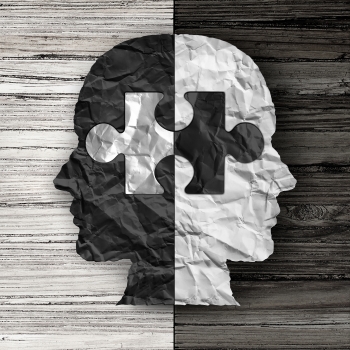
We are living in a moment in which many white-bodied Americans are becoming more aware of systemic racism and its impact on Black and Indigenous people of color (BIPOC). This tip is for white-bodied folks who, wherever they are in their learning, are feeling some mixture of inspired, confused, helpless, numb, awake, guilty, tired, intimidated, and hopeful. If this describes you, perhaps you are already engaging in anti-racist actions and, if you’re on this website, perhaps you’re already journeying towards your own healing and have picked up some useful skills along the way. At the same time, perhaps you’re feeling overwhelmed. You are not alone. This is important to say because sometimes white folks might feel we don’t deserve to struggle, especially in the face of so much suffering experienced by our BIPOC neighbors. However, the consequence of holding all those emotions in is often feeling so confused, sad, guilty, or scared that you shut down, retreating back into your regular life to feel more stable.
Using an understanding of racism inspired by trauma-informed psychotherapy, this tip will start to teach you how to stay engaged, even when you feel overwhelmed and want to numb-out. The main idea is this: all of us carry racism in our bodies. It shows up as automatic thoughts, emotions, and physical sensations that we’d rather ignore or deny. Even if we get really good at thinking and talking about racism in the “right” way, our bodies are still carrying it. These physical sensations - fear, panic, hostility, guilt - are present whether we like it or not. If we’re unaware of and unable to tolerate them, they make us more likely to get stuck in guilt, stress, or disengagement. To avoid shutting down or getting overloaded, we need to work with whiteness, trauma, and the body to help ourselves heal, just like we do in therapy.
The first step is learning how to pay attention to the way you’re feeling, even when it’s uncomfortable. The goal is to slow down and use practical, tangible exercises that help you feel, first, your own suffering, and then the suffering of your BIPOC siblings in a way that keeps you accountable and connected. I’ll use terms like white-bodied, Black-bodied, and white-body supremacy as a reminder that race in our country is a system that exists to keep light-skinned bodies more comfortable than dark-skinned bodies. I’ll also suggest reflection practices to help you explore what comes up when you think about race. Before we start, it’s important to know that exploring whiteness, trauma, and the body is one of many ways white-bodied people can begin to address the legacy of racism in America. It doesn’t replace engaging financially, politically, or socially, but it can help those methods of engagement feel more sustainable, heartfelt, and transformative.
Practice #1: Recognizing Whiteness, Trauma, and the Body
Right now, your body is somewhere. You’re looking at a screen, reading this article. Pause for a moment and feel your feet...your hands...your breathing. Notice your body. As you read the next two paragraphs slowly, don’t worry too much about absorbing the information. Instead, notice any emotions (guilt, anger, sadness, etc.), sensations (heart rate, muscle tension, etc.), and thoughts (“That’s unbelievable.” “That sounds right.”) you experience, without changing them in any way.
“But all our phrasing—race relations, racial chasm, racial justice, racial profiling, white privilege, even white supremacy—serves to obscure that racism is a visceral experience, that it dislodges brains, blocks airways, rips muscle, extracts organs, cracks bones, breaks teeth. . . . You must always remember that the sociology, the history, the economics, the graphs, the charts, the regressions all land, with great violence, upon the body.”
- Ta-Nehisi Coates, Between the World and Me
Resmaa Menakem, a trauma specialist and author living in Minneapolis, begins his book My Grandmother’s Hands: Racialized Trauma and the Pathway to Mending Our Hearts and Bodies with the quote above. The idea is that generations of inequality express themselves in our bodies, and this has a biological reality. Traumatic experiences, like famine, war, sexual violence, lynchings, or enslavement, result in something called epigenetic change. Epigenetic change happens when some genes become more likely to be turned on or off in a way that helps us survive. For example, enslaved women who were raped by white men may have undergone epigenetic changes that helped their bodies stay vigilant to attackers and numb after an attack. These epigenetic changes happened to keep these women alive. The same epigenetic changes are then passed on to their children, whose bodies may still carry the same urge to fight, flee, or freeze. The result is this: black-bodied people carry the biological reality of generations upon generations of trauma inflicted by white-bodied people. The trauma is transgenerational. Research on this topic is just getting started, but scientists believe that these epigenetic changes can look like impaired immune system functioning, over or under-active responses to stress, and psychological characteristics we typically associate with trauma. Essentially, being born with a dark-skinned body in America also means inheriting adaptations that helped your ancestors survive, but these same adaptations also make you more prone to getting sick and feeling sad, numb, or afraid. On top of that, this trauma is decontextualized; people are born carrying it, but our culture doesn’t have the language necessary to tell them why their bodies may feel unsafe, defective, or hypervigilant. Instead, our culture reinforces these biological messages as Black-bodied children learn that the world will still be less safe for and less open to them.
Here’s the thing, though. For white-bodied people, the situation is not as different as we might think. Resmaa Menakem explains that the European people who colonized this country suffered deeply. For the most part, they were poor and immigrated to the New World to escape generations of famine, land theft, torture, imperialism, even genocide. Here, too, we find trauma. Before colonization, the way to avoid this trauma was to be born a landowner or a merchant or an aristocrat. Otherwise, tough luck. Then, in colonial America, poor white-bodied people were suddenly offered the opportunity to be safe, for their children to be safe, simply because they were white. The price of this “deal” was the transfer of their suffering onto enslaved, Black-bodied people. The generations rolled on, and this bargain poor white-bodied people had made to protect themselves from suffering became entrenched and, again, decontextualized. It became the culture of white-body supremacy that we still carry today.
Becoming Aware of What We Carry
Chances are, while you were reading the paragraphs above, you felt a certain way. Perhaps you noticed your body constrict and your mind produce thoughts like “I don’t think this white-body supremacy thing has anything to do with me.” You may have felt threatened or even angry. Perhaps you noticed feelings of sadness or guilt. Perhaps you felt numb. Your body/mind may have responded in these ways to protect you or to keep you feeling stable. However you felt and whatever the reasons for it, this is 100% okay. More than that, your feelings are exactly where understanding whiteness, trauma, and the body begins.
As you navigate the world this week, reading the news, scrolling through social media, and encountering people, you will come into contact with race. Your body will react in some way. Your practice for this week is just to notice what happens. Pause, close your eyes, and breathe. Note what sensations, thoughts, images, and emotions arise. Don’t try to change, hold, or do anything about them. When you have reflexive thoughts, remember that you don’t have to take them seriously, judge them, act on them, or debate them.
The purpose of this exercise is to begin becoming aware of what you’re carrying. As you may know from your own life, it’s hard to fix a problem you’re not aware of, and unfortunately, the feelings you don’t acknowledge are often the ones running the show. So, the first step is just being willing to pause and have a look.
You might find it helpful to write down what you notice throughout the week. Try journaling about these questions: When I interact Black-bodied people or think about race, what do I notice happening in my body? How do I experience fear in my body? How do I experience hope?
This is the first in a series of posts that will draw from the work of trauma-informed therapists of color to explore how the transgenerational trauma of anti-Black racism lives in everyone’s body, white-bodied people included. This is a perspective that urges all people to learn not only how to talk about race, but also how to feel about race: to experience, in our bodies, the ways white supremacy has kept us disconnected from each other and from ourselves. The next post in this series will discuss the vulnerability you may notice when you reconnect, and how to begin exploring these feelings with courage and compassion. For more information on transgenerational trauma and racism in the United States, check out Resmaa Menakem’s interview with NPR’s OnBeing or his full book, My Grandmother’s Hands: Racialized Trauma and the Pathway to Mending our Hearts and Bodies.
We asked a computer to generate a response to the same topic. Read the computer's answer and decide for yourself what works best for you. We only added the computers response because the world of AI is fast approaching and the differences between a computer generated answer and a real person are vastly different and yet AI is coming and will fundamentally shift the world that we all live in.
Whiteness, Trauma and the Body: Whiteness trauma refers to the emotional and psychological harm that can occur as a result of internalizing and perpetuating societal messages about white supremacy and privilege. This can include feelings of guilt, shame, and confusion about one's own racial identity and the impact of white privilege on one's life and relationships.
Whiteness trauma can manifest in the body in a variety of ways, such as physical symptoms of stress, such as headaches and muscle tension, or emotional symptoms such as anxiety, depression, or feelings of guilt or shame. Some people may also experience somatic symptoms such as dissociation, or feeling disconnected from one's body, or changes in appetite or sleep patterns.
It is important to note that whiteness trauma is not the same as the trauma experienced by people of color, who face ongoing discrimination and oppression. However, whiteness trauma can still have a significant impact on one's well-being, and it is important for individuals to seek out therapy or other forms of support to process and heal from this trauma.
It is also important for therapists to be culturally competent and aware of whiteness trauma when working with white clients, and to provide a safe and non-judgmental space for them to explore and process their feelings and experiences.
You can self schedule an in-person or virtual therapy session at the Center for Growth by calling (215) 922- LOVE (5683) x 100.
Our Guarantee: If after your first session you are not sold that you are working with the right therapist, do not hesitate to call our intake line at 215 922 5683 x 100 or Alex at (267) 324-9564 and ask to be rescheduled with another therapist. The choice of how you want to proceed is yours. Our only goal is to support you in becoming the best you possible.
For your convenience, we have brick and mortar offices and work with clients virtually in Connecticut, Delaware, Florida, New Jersey, New Mexico, Pennsylvania, and Virginia.
Physical Therapy Office Locations:
Ocean City Therapy Office 360 West Ave, Floor 1, Ocean City, NJ 08226
Mechanicsville Therapy Office 9044 Mann Drive, Mechanicsville Virginia, 23116
Society Hill Therapy Office 233 S. 6th Street, C-33, Philadelphia PA 19106
Art Museum / Fairmount Therapy Office 2401 Pennsylvania Ave, Suite 1a2, Philadelphia PA 19130
Providence Therapy Office 173 Waterman St. Providence, RI 02906
Fayetteville Therapy Office 101 Devant Street #606, Fayetteville GA 30214
Santa Fe Therapy Office, 2204 B Brothers Road, Santa Fe, New Mexico, 87505
Telemedicine Therapy Locations: We have therapists who are licensed to work in Connecticut, Delaware, Florida, Georgia, New Jersey, New Mexico, Pennsylvania and Virginia and Pennsylvania
Therapy Services Offered in Fayetteville, Ocean City, Mechanicsville, Philadelphia, Providence, Santa Fe:
Individual Counseling and therapy
Couples Counseling and marriage counseling
Teen Therapy and Adolescent Therapy and tweens and child counseling
Family Therapy and multi-generational counseling
Art Therapy and Counseling no art skills needed
ADHD Therapy and ADD, Dyslexia, Autism, Tourettes counseling
Anxiety, Panic, OCD Therapy and worry and fear support
Breaking the cycle of Codependency and being your own person
Overcoming Chronic Illness and Chronic Pain .
Depression Therapy and sadness, gloom, and upset support
Functional Neurological Disorder (FND) Therapy is a particular style of therapy designed for people with problems affecting their nervous system, how the brain and body send and receive signals.
Grief Therapy and loss, End of A Relationship, rejections, pregnancy and loss and therapy
Mindfulness Based Therapy and spirituality based therapy
Narcissistic Abuse Recovery child of, parent of, spouse of, sibling of a narcissist.
Sex Therapy and sexual function & dysfunction, sex addiction, sexual orientation and gender identity support
Trauma Therapy both emotional and sexual abuse, complex trauma, PTSD counseling
Divorce support
Affairs, Infidelity, Unfaithful, Cheating counseling
Parenting therapy
Personality disorder treatments Narcissist, Borderline, Histrionic
Setting Boundaries and identifying ones own Core Beliefs
Just name some of the Mental Health issues that we work with. Our goal is to help you Change and Achieve Your Dreams



















